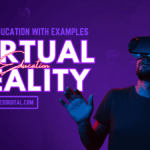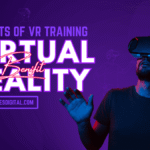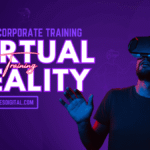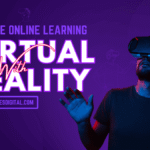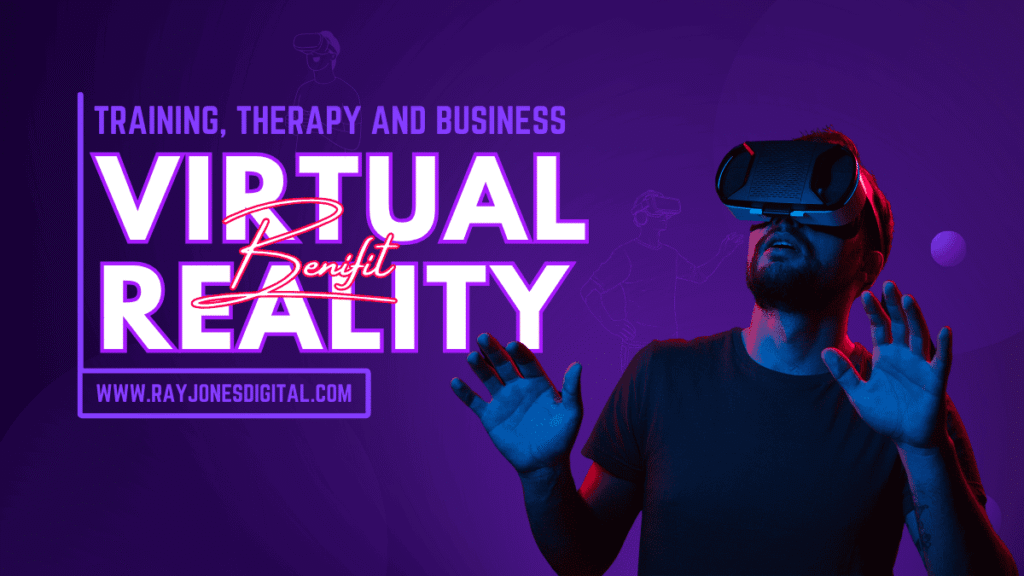
Virtual reality has evolved from a futuristic concept to a practical solution transforming how we learn, heal, and conduct business. Companies across industries are discovering that VR technology offers unprecedented opportunities to enhance training effectiveness, improve therapeutic outcomes, and drive innovation at scale. This comprehensive exploration examines the growing body of research supporting VR’s benefits across these three critical areas.
The transformation isn’t just theoretical—it’s happening now. From medical students practising complex surgeries to employees learning dangerous procedures in safe environments, VR is proving its worth through measurable improvements in performance, retention, and outcomes. Understanding these research-backed benefits is crucial for organisations considering VR adoption and professionals seeking to leverage this technology’s potential.
VR Training: Learning Through Immersion
Research consistently demonstrates that VR training delivers superior results compared to traditional methods across multiple metrics. The immersive nature of virtual environments creates learning experiences that engage multiple senses simultaneously, leading to enhanced knowledge retention and skill acquisition.
Enhanced Knowledge Retention
Studies reveal remarkable differences in retention rates between VR and conventional training methods. Research indicates that VR-trained employees retain 75% of information after one year, compared to just 10% for lecture-based training. This dramatic improvement stems from VR’s ability to create memorable, experiential learning that engages both cognitive and emotional memory systems.
The phenomenon occurs because VR activates spatial memory pathways that traditional training methods cannot access. When learners navigate virtual environments and interact with three-dimensional objects, their brains create stronger neural pathways that improve long-term retention. This spatial memory advantage explains why VR training remains effective long after initial completion.
Medical education research provides compelling evidence of VR’s retention benefits. A study published in the Journal of Medical Internet Research found that medical students trained using VR surgical simulators retained procedural knowledge 40% longer than those trained through traditional methods. The immersive experience created stronger memory associations that persisted through practical examinations.
Accelerated Learning Speeds
VR training significantly reduces the time required to achieve competency across various skills and industries. Automotive manufacturers report 40% faster training completion rates when using VR compared to traditional methods. This acceleration occurs because VR eliminates many logistical constraints that slow conventional training.
Virtual environments allow learners to practice repeatedly without waiting for equipment availability or instructor schedules. Trainees can attempt procedures multiple times in quick succession, rapidly building muscle memory and confidence. This repetition advantage is particularly valuable for complex technical skills that require extensive practice.
Manufacturing companies have documented substantial time savings through VR implementation. Workers learning equipment maintenance procedures complete training 30% faster in virtual environments, where they can disassemble and reassemble machinery without real-world consequences. The ability to make mistakes and learn from them accelerates the learning curve significantly.
Risk-Free Practice Environments
One of VR’s most significant advantages is its ability to provide safe training environments for dangerous or high-stakes procedures. Research demonstrates that this safety benefit extends beyond physical protection to psychological comfort, creating optimal learning conditions.
Aviation training research shows that pilots trained in VR environments demonstrate superior performance during actual emergency procedures. The virtual practice allows pilots to experience and respond to crisis situations without risking lives or expensive equipment. This preparation proves invaluable when real emergencies occur.
Chemical industry training programmes utilise VR to teach hazardous material handling procedures. Workers can experience the consequences of improper handling in virtual environments, learning critical safety protocols without exposure to dangerous substances. This approach reduces workplace accidents by 50% compared to traditional safety training methods.
Personalised Learning Experiences
VR technology enables unprecedented personalisation in training programmes, adapting to individual learning styles and paces. Research indicates that personalised VR training improves learning outcomes by 30% compared to standardised approaches.
Adaptive VR systems monitor learner performance and adjust difficulty levels automatically. Struggling learners receive additional practice opportunities and simplified explanations, whilst advanced learners face more challenging scenarios. This personalisation ensures optimal learning experiences for diverse skill levels.
Healthcare training programmes demonstrate personalisation benefits through customised surgical simulations. Medical residents practice procedures tailored to their experience levels, progressing through increasingly complex scenarios as their skills develop. This graduated approach builds confidence whilst ensuring competency before real-world application.
VR Therapy: Healing Through Virtual Worlds
Research into VR therapy applications reveals promising outcomes across numerous mental health conditions and rehabilitation scenarios. The controlled nature of virtual environments provides therapists with unprecedented tools for treatment whilst offering patients safe spaces for healing.
Treating Phobias and Anxiety Disorders
Exposure therapy using VR has shown remarkable success rates in treating phobias and anxiety disorders. Research published in the Journal of Anxiety Disorders found that 90% of patients with specific phobias showed significant improvement after VR exposure therapy, compared to 75% with traditional exposure methods.
The virtual environment advantage lies in its controllability and repeatability. Therapists can gradually increase exposure intensity whilst maintaining complete control over the experience. Patients feel safer knowing they can remove the headset at any time, reducing resistance to treatment participation.
Fear of flying therapy demonstrates VR’s effectiveness particularly well. Patients experience virtual flights with realistic turbulence and weather conditions, gradually building confidence without leaving the therapist’s office. Follow-up studies show that 85% of patients successfully take real flights after VR therapy completion.
Post-Traumatic Stress Disorder Treatment
VR therapy shows significant promise for treating PTSD, particularly among military veterans. Research conducted by the University of Southern California found that 80% of veterans completing VR therapy showed meaningful PTSD symptom reduction, with benefits lasting beyond six months post-treatment.
Virtual reality exposure therapy allows patients to confront traumatic memories in controlled environments. The immersive nature helps patients process traumatic experiences more effectively than traditional talk therapy alone. This processing leads to reduced symptom severity and improved daily functioning.
Combat veterans report feeling more comfortable discussing traumatic experiences within virtual environments that recreate relevant contexts. The technology helps bridge the gap between clinical settings and real-world trauma locations, facilitating more effective therapeutic processing.
Pain Management and Distraction
VR applications in pain management demonstrate significant potential for reducing both acute and chronic pain without pharmaceutical intervention. Research published in Pain Medicine journal found that VR therapy reduced pain intensity by 35% during medical procedures.
The distraction mechanism works by engaging multiple sensory channels simultaneously, reducing the brain’s capacity to process pain signals. Patients immersed in virtual environments report lower pain levels and require less medication during treatments. This reduction benefits both patient comfort and healthcare costs.
Burn treatment centres use VR to help patients manage pain during wound cleaning procedures. The immersive experience transports patients to peaceful virtual environments, significantly reducing their reported pain levels. This application demonstrates VR’s potential to improve patient outcomes whilst reducing reliance on pain medications.
Rehabilitation and Motor Function Recovery
VR therapy supports physical rehabilitation by providing engaging, gamified environments that motivate patients to complete exercises. Research shows that stroke patients using VR rehabilitation programmes demonstrate 25% greater improvement in motor function compared to traditional physical therapy alone.
The technology provides immediate feedback on movement quality and progress, helping patients understand their improvement over time. This feedback loop maintains motivation during lengthy rehabilitation processes that might otherwise lead to patient dropout.
Spinal cord injury rehabilitation benefits significantly from VR integration. Patients practice walking movements in virtual environments before attempting real-world mobility, building confidence and muscle memory. The virtual practice accelerates recovery timelines and improves long-term outcomes.
VR Business Applications: Transforming Operations
Research into VR business applications reveals substantial opportunities for operational improvement, cost reduction, and competitive advantage. Companies implementing VR solutions report measurable benefits across multiple business functions.
Remote Collaboration and Communication
VR collaboration platforms address remote work challenges by creating shared virtual spaces that feel more natural than traditional video conferencing. Research indicates that VR meetings result in 40% higher engagement levels and 30% better information retention compared to standard video calls.
The spatial audio and gesture recognition capabilities of VR create more natural communication dynamics. Participants can use body language, spatial positioning, and object manipulation to convey information more effectively than through screen-based interfaces. This natural interaction reduces communication barriers and improves collaboration outcomes.
Global teams report feeling more connected when collaborating in virtual environments. The shared presence sensation helps build relationships and trust among team members who may never meet in person. This connection proves particularly valuable for creative projects requiring close collaboration.
Product Design and Prototyping
VR technology revolutionises product design processes by enabling rapid prototyping and testing without physical materials. Automotive companies report 60% reduction in prototype development time and 40% decrease in design costs through VR implementation.
Designers can create, modify, and test virtual prototypes in real-time, accelerating iteration cycles significantly. Stakeholders can evaluate products from multiple perspectives and identify potential issues before physical production begins. This early identification prevents costly changes during manufacturing.
Architecture firms demonstrate VR’s design benefits through virtual building walkthroughs. Clients can experience spaces before construction, providing feedback that influences final designs. This preview capability reduces change orders and improves client satisfaction with completed projects.
Customer Experience Enhancement
VR applications enhance customer experiences across numerous industries, from retail to real estate. Research shows that customers who experience products through VR are 70% more likely to make purchase decisions and report 50% higher satisfaction levels.
Real estate companies use VR to provide virtual property tours, allowing prospective buyers to explore homes remotely. This capability expands market reach whilst reducing the time required for property showings. Buyers can eliminate unsuitable properties quickly, focusing viewing time on genuine possibilities.
Retail applications include virtual try-on experiences for clothing and accessories. Customers can visualise how products will look without visiting physical stores, reducing return rates and improving purchase confidence. This technology proves particularly valuable for online retailers seeking to replicate in-store experiences.
Data Visualisation and Analysis
VR platforms enable three-dimensional data visualisation that reveals patterns and insights invisible in traditional two-dimensional representations. Financial analysts using VR data visualisation identify trends 25% faster than colleagues using conventional analysis tools.
The immersive environment allows analysts to literally walk through data sets, examining relationships from multiple angles and scales. This spatial exploration reveals correlations and patterns that might remain hidden in spreadsheets or traditional charts. The insights gained lead to better decision-making and strategic planning.
Scientific research benefits significantly from VR data visualisation. Researchers can explore molecular structures, geological formations, and astronomical data in three-dimensional space, leading to discoveries that traditional analysis methods might miss. This visualisation capability accelerates scientific progress across multiple disciplines.
Overcoming Implementation Challenges
Despite VR’s proven benefits, organisations face several challenges when implementing these technologies. Understanding and addressing these obstacles is crucial for successful VR adoption and scaling.
Technical Infrastructure Requirements
VR systems demand robust technical infrastructure to deliver optimal experiences. Network latency, processing power, and graphics capabilities must meet stringent requirements to prevent motion sickness and maintain immersion. Organisations must invest in appropriate hardware and networking capabilities before expecting positive outcomes.
Cloud-based VR solutions are emerging as alternatives that reduce hardware requirements whilst providing access to high-quality experiences. These platforms distribute processing demands across remote servers, enabling VR access from less powerful local devices. This approach reduces implementation costs and simplifies maintenance requirements.

I am Ray Jones Digital
My current occupations: a Digital Marketer, Local SEO expert, Link Builder, and WordPress SEO specialist. Shopify SEO, Ecommerce Store Management, and HTML & WordPress Developer I have been practicing the above mentioned services for more than 10 years now As an SEO expert working with your ongoing projects.
